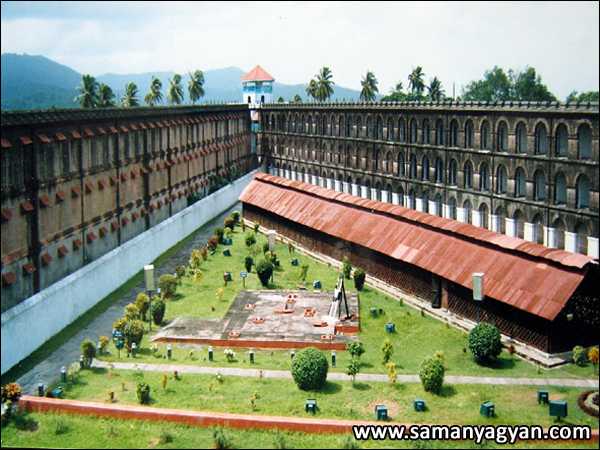Cellular Jail Quick Facts
| Place | Port Blair, Andaman Islands (India) |
| Build in between | 1896-1906 |
| Build by | British Goverment |
| Architectural style | Cellular, Courtyard |
| Type | Jail |
Cellular Jail Overview
India is one of the most beautiful countries in the world in terms of tourism. The states of India attract tourists from India and abroad due to their historical buildings and amazing artifacts, the history of the Indian Union Territory Andaman and Nicobar Island has also been very interesting, but the most famous cellular jail of the British period is located where But Indian freedom fighters were punished with black water (Kale Pani Ki Saza).
Cellular Jail History
This prison was built between 1896 AD and 1906 AD. Andaman was being used as a prison long ago, in the revolution of 1857, the Indian revolutionaries stunned the British government, they realized that their roots are not going to last long in India. . After the war in Delhi, the British knew that they would now have to win this war not on the strength of their bravery but by espionage and conspiracies and they had adopted this ideology.
The British had given very severe punishment to the Indian freedom fighters to end this revolution, English historians tried to improve the image of their government by calling this revolution a military violence. During this revolution, many people were hanged, many were tied in front of the cannon and blown away, the people who were not able to give such torture to the English government, they used to send them to such a place that they would never leave from there.
Many freedom fighters were sentenced to life imprisonment in the Andaman jail by the British government, in whose memory a museum has also been built there, in which their sacrifice can be easily seen and understood.
Cellular Jail Interesting Facts
- It took more than 10 years to build this world-famous prison, its construction work was started in the year 1896, and was completed by the year 1906.
- This prison is also named after its world-famous structure, the inner structure of this prison is like a cell, hence it is called cellular jail.
- There are more than 696 cells inside this jail and these cells have been made in such a way that no criminal can meet any other criminal.
- The ancient form of this prison looked like the shape of an octopus, as it was covered in 7 branches but at the time of Independence, its 4 branches were broken by the British, due to which only 3 branches are visible today.
- It was structured in such a way that a tower was built in the middle, from which 7 branches have come out which are connected to the tower through a corridor. With the help of the tower built in it, a strict vigil was kept on the prisoners here.
- Freedom fighters brought from different parts of the country were kept under house arrest in this jail, and they were given harsh punishments like crushing oil on a crusher, breaking stones, grinding mills, chopping wood, standing in handcuffs for a week, etc.
- In the year 1863 AD, the most famous scribe of Bengal, Rev. Henry. Fisher Corbyn was also sent to this prison, where he founded the 'Andamanese Home', which emerged as a repressive institution disguised as a charitable institution.
- After a rebellion in the year 1868 AD, more than 733 prisoners were sent to this jail from Karachi.
- David Barry and Major James Pattison Walker, two famous jailers of the British Empire, had sent more than 200 rebels to this prison and also subjected them to severe torture.
- The hunger strike by the prisoners of this jail in the year 1933 drew the attention of the jail authorities to them. 33 prisoners of this jail protested the inhuman torture meted out to them and went on hunger strike.
- Presently this jail has been developed into a hospital and museum, whose walls have the names of the brave martyrs written on them. Even today those weapons are kept in its museum, from which atrocities were done on the freedom fighters.
- It was declared an Indian National Monument on 11 February 1979 by the then Prime Minister of India, Shri Morarji Desai.
- Japan had invaded the Andaman Islands in the year 1942 and this prison was developed for British prisoners during this period Dr. Subhash Chandra Bose also visited the island.

